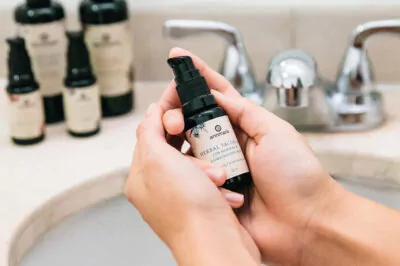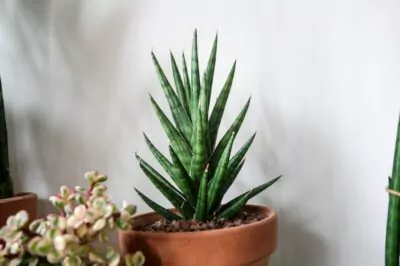Table of Contents[Hide][Show]
Greasy, oily and shiny have made way for glowy, shimmery, and dewy in skin care language these days. But how do we select oils that give us the results we want, sans the results we don’t?
Learn the tips, tricks and theory behind selecting the oils that are right for you and applying them with skill that leaves you with summer-dewy skin all through the year.
Is Oil Bad for Your Skin?
I still remember when the majority of every skin care product had “oil-free” written on the front of the packaging. This was an answer to the industry concern that oil = acne and you wanted to avoid it at all costs.
How crazy that seems now looking back. After all, we know that our skin creates oil, needs oil and is actually oil loving! Now, instead of avoiding oil at all costs I see a plethora of oil options for hair, skin, nails, and even teeth (oil-pulling)!
DIY: How to Do an At-Home Facial
What was once avoided is now flooding the market at an overwhelming rate. Read on to get the scoop how to use oil as your moisturizer with glowing results.
How to Make Your Skin Look Dewy
To master the art of using oil as a moisturizer, layering is an important and fundamental element.
The following are the steps, in order of application to the skin, to ensure that the skin is prepped and ready to absorb oil as your moisturizer.
Note: you might not do every step each time you prep the skin, but all are listed here so you know the order when/if you do them.
• Pre-cleanse
• Cleanse
• Exfoliate
• Hydrosol / Toner
• Treat—Serum (most are an aloe, alcohol or water base)
• Oil—Moisturizer (vitamin-rich oil smoothie for the complexion)
How to Properly Apply Oil to Your Face
To get the most out of oil as your moisturizer, you have to apply it differently than lotions and creams. Follow the below application steps to get the best results when applying oil as your moisturizer.
1. Dispense
Dispense a pump of oil to your fingertips or your palm.
2. Position
With your opposite hand center finger dip into the small pool of oil and “dot” the face in the following points:
– Center of forehead
– Center of left cheek
– Center of right cheek
– Tip of chin
– Center of the collarbone
3. Massage
Gently massage oil from the center outward and upward, connecting all points. Make sure the full face, neck and decollete is smoothed over and left with a nourished glimmer.
Common Mistakes When Using Oil as a Moisturizer
When you have the skin in an optimum state and you have selected the correct oil for your skin type it is very obvious. The oil melts into the skin and leaves you with a healthy glow without any heavy greasy feeling. But, in addition to the list below, you’ll also want to know the best ways to apply your moisturizer to avoid common moisturizing mistakes that can, instead, result in quickly aging your skin.
Oil Isn’t Absorbing?
The top concern of using oil is that it doesn’t absorb into the skin properly. Here are the best tips on what needs adjustment to get your nourishment to penetrate and leave you with the dewy skin you crave.

Remember to Exfoliate Your Skin First
If dry, dehydrated skin cells are leaving a waxy layer on the skin surface, oils will have an understandably difficult time absorbing.
When this is the case, exfoliating to dissolve this creates a more permeable layer to absorb oil when applied as your moisturizer.
Exfoliate, then hydrate with a hydrosol and/or serum, follow with the above 5 Dot Oil Application and massage it in for the perfect glow complexion.
Oil Molecules May Inappropriate for Your Skin Type
All oils are not created equal. Under the microscope, oils vary in diameter and therefore have diverse absorption potentials to match diverse skin types. Using the right ones for your skin and current skin state will absorb with dramatically different effectiveness.
Avoid Over-Exfoliating Your Skin
Too much exfoliation leaves the skin stripped and affects the barrier function of the skin, as well as a condition called TEWL (transepidermal water loss). TEWL is when water moves through the layers of the skin and evaporates. Thinned out, over-exfoliated skin intensifies TEWL and leaves the skin unable to absorb and hold onto oil effectively.
Without a professional eye it can be difficult to tell the difference between over-exfoliated skin and skin that needs to be exfoliated. I recommend always assuming it’s over exfoliated and needs moisture first.
How to Improve Your Oil Absorption?
Skip the exfoliation for a minimum of 24 hours, apply serums that contain Hyaluronic Acid or Tremella (water-loving ingredients that helps your skin hold onto water moisture), apply your oil with the 5 Dot System and after its massaged in, mist the skin with your hydrosol and gently re-massage to blend in the hydrofoil and oil combination.
Oil and water do not mix so, for some skin, switching the classic steps here can help “press” the oil into the skin and encourage the absorption of your oil leaving you with the perfect balance of oil and water on the skin.
What Oil is Best for My Skin Type?
Make sure to read all the diverse oils that your product contains in the ingredients (not just those advertised on the marketing/package) or get a professional recommendation. Here are 7 most popular oils for different skin types to give you an idea of what to look for:
• Oily Skin – Grapeseed, Sunflower Seed, Hazelnut, Tamanu
• Dry Skin – Avocado, Coconut, Jojoba, RoseHip Seed, Pomegranate
• Normal Skin – Sunflower Seed, Grapeseed Oil, Olive
• Sensitive Skin – Camellia Seed, Grapeseed Oil, Borage Seed, Hemp Seed Oil
How Should You Use Retinol?
Now that you have a great understanding of which oils to look for and which to avoid depending on your skin type, there is one other aspect that I feel makes a huge difference on being effective in your use of oil as a moisturizer.
The rise of retinol use in skin care requires a special mention. This step in skin care can make the skin dry or sensitized as well as make the absorption of oil more difficult.
Also, there is a lot of conflicting communication about what to layer, what you should and shouldn’t use when you are using Retinols and the other derivatives of Vitamin A, like Retin-A, that are prescribed by a dermatologist.
There are basically 3 camps:
1. Retinoids ONLY
The theory here is retinoids need to penetrate and other products dilute the retinoids’ effectiveness, so it’s encouraged to apply retinoids and nothing else.
2. Retinoids FIRST
The theory here is retinoids need to penetrate first, and since it’s believed that other products dilute retinoids’ effectiveness, it’s encouraged to apply, let dry completely and then layer only light or oil-free moisturizers.
3. Moisturizer FIRST
The theory here is retinoids are extremely irritating, so it’s encouraged to first apply facial oil or moisturizer, then layer the retinoids to prevent or minimize the inevitable skin irritation.
Also within this camp is to use retinols within your moisturizer. These retinols are less irritating by nature and blended into a product that can offer results over time without the typical irritations and concerns of stronger retinoid forms.

How Do you Decide What to Do?
As a Holistic Esthetician, I encourage people to air on the side of nourishment and care for the skin first. Retinoids, though Vitamin A derivatives are considered toxic in prescriptive dosages.
So, start with the moisturizer first camp. Keep the awareness that skin irritation likelihood increases as you increase your retinol percentage, frequency or move to a prescriptive form.
Oil Base Product – The Big Takeaways
Oil was considered taboo in mainstream skin care not long ago and has now surfaced to support the century-old belief that it is functional and supportive of skin health.
Do Your Research
All oil is not created equal. All oils are not good for all skin. There is an art to layering oils. Do your research to find out which oils are best for your skin type, and what issues may be hindering its effectiveness.
Remember to Pick the Right Oilds
With the right oils, applied effectively, you may never need a lotion or cream facial moisturizer ever again. I have been using oil as my facial moisturizer for years.
What I used to term as greasy decades ago, I now crave. When my face shimmers and catches the light I know I am doing my skin care right.
References:
WHAT IS TRANSEPIDERMAL WATER LOSS AND WHY IS IT IMPORTANT?








I love this post! I truly believe that any and every skin type can benefit from a facial oil as long as it’s the correct one. Great tips in this blog post.